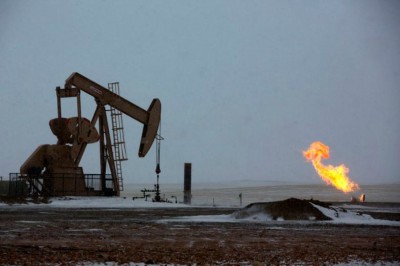IHS Markit: US natgas production falls again in April with Texas, GoM in sharp decline
HOUSTON – Lower-48 US natural gas production averaged just 70.2 Bcfd during April 2017—the lowest level in two months—but higher than production levels at the start of the year, according to analysis from IHS Markit.
 |
| Photo Courtesy of Reuters. |
Texas, which in the past has been a leader in US natural gas production, along with the Gulf of Mexico, experienced sharp production declines in both March and April, IHS Markit said, recording the state’s lowest production levels in nearly 10 yr (since August 2007). Texas production dropped 0.1 Bcfd in April after dropping 0.3 Bcfd in March, averaging below 16 Bcfd. Gulf of Mexico natural gas production averaged slightly more than 3 Bcfd in April.
“While natural gas production averages for the Lower-48 were down in April by three% compared to April 2016, the biggest surprise was the sharp declines in Texas and Gulf of Mexico production, which we’ve not seen since September 2008, when Hurricanes Gustav and Ike wreaked havoc on offshore platforms,” said Jack Weixel, vice president for analytics at PointLogic Energy. (PointLogic is a business unit of IHS Markit, which tracks US production levels on a daily basis across 92 producing areas in the lower-48 states.). “Producers in the Gulf have recently shifted focus to deeper offshore drilling targeted at oil plays with lower associated gas production.”
For 2017 to-date, Weixel said lower-48 gas production has averaged more than 70 Bcfd, or 3.5% (2.4 Bcfd) lower than the same period in 2016. April 2017 production was 0.2% (0.2 Bcfd) below March 2017 levels, and nearly 3% (2.1 Bcfd) lower than April 2016. Northeast production continues to inch higher—approaching 23 Bcfd, which constitutes nearly 33% of total US lower-48 production. Key producing areas in the Southeast US have remained flat compared to levels recorded early this year.
“We see prices rising for natural gas, but the market is still sluggish in responding with new production, so the same dismal level of production persists for months on end,” Weixel said. “The treadmill has gotten steeper to replace existing production which is in decline, particularly in shale producing areas. So the rig count is going up, but production is still catching up.”

- ExxonMobil halts 1-Bft3d blue hydrogen project in Texas
- Aramco and Yokogawa commission multiple autonomous control AI agents at Fadhili gas plant
- Ukraine will resume gas imports via Transbalkan route in November
- Mitsubishi to inject $260 MM into Brunei LNG project
- Freeport LNG (U.S.) on track to take in more natgas on Thursday after unit outage



Comments